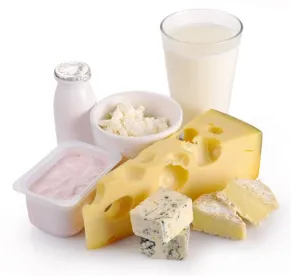A new, tentative agreement reached between Canadian dairy farmers and processors will allow Canadian processors to buy domestic milk ingredients at world market prices. The nationwide pricing strategy aims to incentivize the use of Canadian domestic ingredients by pricing them at levels that are competitive with those offered by American and other international producers. In Canada, domestic dairy ingredients are priced at higher levels than international equivalents due to Canada’s supply management regime. The new strategy is expected to focus on imports of ultrafiltered (also known as diafiltered) milk, which has enjoyed access to the Canadian market as a duty- and quota-free import into Canada.
The Current Regime
Prior to 2016, ultrafiltered milk entered Canada duty- and quota-free under the North American Free Trade Agreement (“NAFTA”) as a non-fluid protein concentrate rather than milk. This led to the growth of a substantial ultrafiltered milk industry in the Midwestern and Northeastern United States. In May 2016, the Canadian dairy industry instituted a temporary program that allowed Canadian manufacturers to buy domestic ingredients at world market prices, as opposed to the typically higher prices established by Canada’s national supply management system. The Canadian Milk Supply Management Committee’s (“CMSMC”) temporary program modified milk class 4(m) to include liquid skim milk, in addition to liquid and dry milk protein concentrate, the latter of which was being imported as a substitute for liquid skim milk because of its duty exemption under NAFTA. Major American processors such as Cayuga Milk Ingredients and O-AT-KA Milk Products Cooperative have renounced both the CMSMC’s temporary program, as well as the new tentative agreement reached this month, as they are expected to lose much of their access to the Canadian market due to the changes.
Official Details are Limited
The Canadian Dairy Commission ("CDC”) is not releasing any details about the strategy until it is ratified by industry participants. While initial timelines predicted its ratification in September 2016, latest comment from the CDC has postponed their timeline until late fall. In the meantime, the temporary measures put into place by the CMSMC, which were set to expire on July 31, 2016, have been extended to November 1, 2016.
The Office of the US Trade Representative has yet to comment on the tentative deal.
As final details surrounding Canada’s new dairy pricing strategy are fully released. Dickinson Wright will provide updated information to help clients navigate these changes.
Other Issues on the Horizon
New forthcoming Canadian international obligations will also affect American and Canadian dairy producers.
The Comprehensive Economic and Trade Agreement (“CETA”) with the European Union (”EU”) was singed in late 2014. Once ratified, CETA is expected to increase EU access to Canada’s high-value cheese market, likely displacing some Canadian production. It is projected to more than double EU exports of cheese to Canada, corresponding to a final market share of more than 4 percent of the Canadian market.
The Trans Pacific Partnership (“TPP”) is a trade agreement amongst 12 countries. Signed in February 2016, the ratification process is expected to take place over the coming years. The TPP’s signatories include large dairy producing countries such as New Zealand, Australia and the U.S. Under the TPP, the sum of access granted to foreign producers in the dairy industry projects to be 3.25 percent of Canada’s current annual production.
Dylan E. Augruso is co-author of this article.




 />i
/>i

